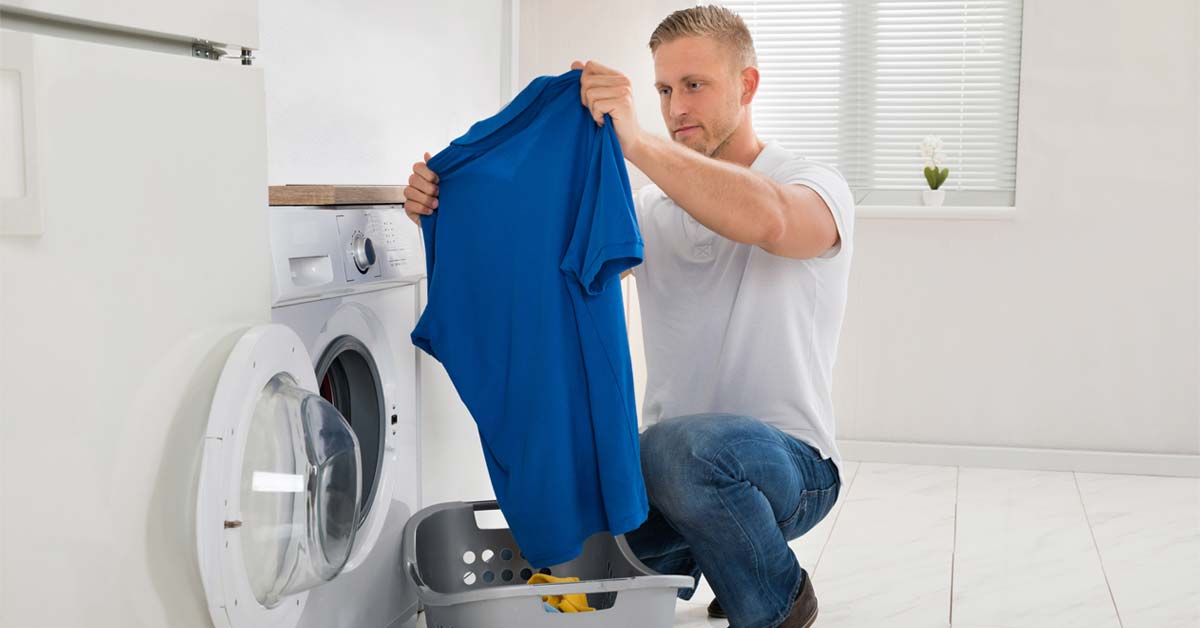WILMINGTON, Mass. () – Laundering your work uniforms at home may seem sensible, but is it? According to studies, many workers regularly expose their families to potential health risks and don’t even know it. Home washing machines and dryers aren’t equipped to handle all contaminated clothing and can become toxic zones where contaminants can linger only to be dispersed later. There are also risks of fire or explosion when certain solvents or other chemicals are brought home on work clothing. And, workers in industries where flame resistant workwear is the norm can unknowingly compromise the necessary safety characteristics of their protective work clothing.
Approximately 32 million workers are exposed to hazardous chemicals in more than 3.5 million workplaces. The National Institute for Occupational Safety and Health (NIOSH) conducted a study of contamination in workers’ homes by hazardous substances transported from the workplace, and work clothing was identified as one route of exposure that caused health effects among workers’ families.
While most people associate working in a chemical manufacturing plant as a job that involves chemical exposures, there are many other types of jobs where exposure may also occur. For example, people who work in the following industries could be at risk of bringing contaminants home on work clothes: auto repair, welding, agriculture, healthcare/dental, manufacturing, construction, beauty salons, and even office and store workers. In the NIOSH study, some cases showed that home washing machines and dryers contained dangerous levels of hazardous substances. For people who work away from their home, NIOSH recommends leaving soiled work clothes on the job to help reduce the risks of contamination.
There are also risks associated with home laundering protective workwear – specifically, flame resistant (FR) clothing. FR workwear is constructed of specialized fabrics that almost immediately self-extinguish, protecting workers who work on or near electrical hazards, combustible fuel sources, or other at-risk environments. However, the home laundering of FR garments can compromise workers’ safety on the job. Home laundry detergents may not successfully remove flammable types of soil found in many industries, especially heavy greases and oily soils. If flammable soils are not completely removed, the flame resistance of the garment may be compromised. Additionally, using starch or fabric softeners may coat fabric fibers, masking FR performance and possibly serving as fuel in the event of garment ignition.
But perhaps the greatest workwear contamination concern is due to the proliferation of healthcare-related workers. Workwear for hospital and non-acute care employees is now under the microscope. Recently, the U.S. Centers for Disease Control and Prevention (CDC) conducted research aimed specifically at healthcare laundering, concluding that when done using the proper procedures, healthcare laundering is effective at preventing the spread of infection. However, they note that current infection-control strategies used by commercial laundry operations are a large part of that success, saying that innovations in the laundry industry have enabled healthcare facilities and their contracted commercial launderers to provide a quality product for a diverse textile inventory, including uniforms and scrubs.
In fact, another recent study by Bioscience Laboratories found the home laundering of healthcare garments showed significantly greater bacterial contamination than those sent to a third-party company for laundering. It’s no surprise, then, that the Association of periOperative Registered Nurses (AORN) removed all recommendations for the home laundering of healthcare attire, instead opting to recommend only industrial laundering. Further, AORN has stated that since home laundering is not monitored for quality, consistency, or safety, home laundering may not reliably kill all pathogens, and that those pathogens may survive in the form of biofilms within the washing machine.
“Industrial laundering and managed workwear programs offer the ability to regulate and control all sorts of factors that are simply not possible in a home setting,” says Adam Soreff, director of marketing and communications at UniFirst Corporation, a leading provider of managed uniform and work apparel programs. “We’re able to control exact washer and dryer temperatures, plus we use very specific environmentally-safe detergents that are specially formulated for varying industries and types of soiling. We’re also able to provide quality inspections, mending, and repairs to garments as needed. This is of particular importance when it comes to FR and other safety-type garments.”
Workwear providers like UniFirst offer uniforms, work apparel, and other work textiles through either a rental, lease, or purchase program that can include the pickup, delivery and industrial laundering, plus any needed repairs, of all workwear for a low weekly fee. These types of industrial laundering programs offer a cost-effective and convenient solution for employers while protecting wearers and their families from unwanted contaminants in the home.
About UniFirst
Headquartered in Wilmington, Mass., UniFirst Corporation (NYSE: UNF) is a North American leader in the supply and servicing of uniform and workwear programs, as well as the delivery of facility service programs. Together with its subsidiaries, the company also provides first aid and safety products, and manages specialized garment programs for the cleanroom and nuclear industries. UniFirst manufactures its own branded workwear, protective clothing, and floorcare products, and with over 225 service locations, 275,000 customer locations, and 12,000 employee Team Partners, the company outfits more than 1.5 million workers each business day. For more information, contact UniFirst at 888.831.1787 or visit UniFirst.com.

